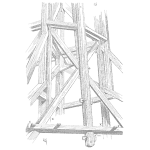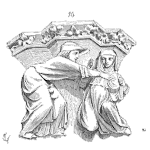
Perfection is difficult to achieve. It takes a lot of work and that delays progress. In operational environments that can lead to lost or deferred opportunities, and leave money on the table.
[Read more…]Your Reliability Engineering Professional Development Site
by James Reyes-Picknell Leave a Comment

Perfection is difficult to achieve. It takes a lot of work and that delays progress. In operational environments that can lead to lost or deferred opportunities, and leave money on the table.
[Read more…]by James Reyes-Picknell Leave a Comment

Is your project ready for operations when you want to start up? Can you commission and start up with ease and expect to reach full and steady production quickly? Or is your experience with project start ups more chaotic?
Conceptually, entropy is a scientific measure that represents that natural state of everything – chaos. The more chaotic things are, the more entropy they have. We tend to prefer things orderly and predictable. To achieve that we add energy, but without it, we will have chaos. If start ups after a capital project are chaotic, it means you have missed something. Think of it as not having enough energy. That energy is fore-thought and preparation. With it, your project is ready for operations.
by James Reyes-Picknell Leave a Comment

Outsourcing is a form of alternative service delivery where one company hires another to perform some of its functions. It’s fairly common in some fields, such as accounting, manufacturing, human resources, procurement, and IT, but not as common when it comes to maintenance and asset management. It has its advantages and risks and must be approached carefully.
In July/Aug 2014, we authored an article on outsourcing in PEM magazine (now MRO Magazine). Although outsourcing isn’t yet as popular in North America, as elsewhere, it is increasingly being seen as an option. Here are a number of considerations to make when considering outsourcing or contracting services.
[Read more…]by James Reyes-Picknell Leave a Comment

My book, “Uptime – Strategies for Excellence in Maintenance Management”, now in its 3rd edition includes a chapter on “Evidence Based Asset Management”. It emphasizes the use of historical data, enhanced (substantially in most cases) by “evidence” from experts obtained through a structured interview process of “knowledge elicitation.”
The questions asked are not leading, they are designed to get at reliability related information from the experiences of those who generally do not understand the mathematics of reliability. That process is painstakingly accurate and tedious. Projects that I was involved in, involved highly educated reliability and data science experts, and took upwards of 6 months to produce analytical results that could be used.
[Read more…]by James Reyes-Picknell Leave a Comment

Getting the right parts for your maintenance isn’t quite as easy as you might think. To begin with they must be included in your spares inventory and stocked on your site. If not, they must be purchased when needed. If you are reacting to a breakdown, you will need them in a hurry, and you may find yourself short. Why does that happen? And, what can you do about it? Missing parts can cost you time – time that the equipment is down and not producing. Your operators are idled and your supply chain folks are scrambling to help you. That increases maintenance and operating costs, reduces production output and reduces available working capital. Those parts are like gold to your operation!
[Read more…]by James Reyes-Picknell Leave a Comment

Our Rapid Reliability Assessment is designed for small or budget constrained operations. Consulting engagements with the big firms are expensive and out of the question. This is for smaller operations that need something that is not overly intrusive, not expensive, and gives them big bang for their buck.
[Read more…]by James Reyes-Picknell Leave a Comment

Today’s Gremlin – “Assumptions” can get a planner or a supervisor into a lot of trouble. You might be very knowledgeable and have great faith in your trades-persons, but assuming they know what you know, can be dangerous. There’s always discussion about “how much detail” to put in a maintenance job plan. It should be safe to assume your trades know how to perform those basic skills that earned them their trade. But it is not safe to assume they are familiar enough with your equipment and operation to use those skills correctly.
[Read more…]by James Reyes-Picknell Leave a Comment

Today’s Gremlin – “Perfectionist”, is often a planner or an engineer. This Gremlin holds himself or herself to extremely high, pretty much unattainable, standards. They cannot be found to be wrong by anyone. Perfectionists go to great lengths to get everything they do, 100% right, 100% of the time.
We all know that getting part way complete, even a large part of the way complete, is quick and easy. Although whatever we are doing may not be perfect, it is close and for most purposes, it may be good enough.
[Read more…]by James Reyes-Picknell Leave a Comment

Today’s Gremlin – “No plan needed”, shows up even where there are planners. This gremlin is comfortable creating maintenance work schedules that are little more than wishful thinking! Plans describe what work must be done, how it should be done and with what resources (skills, tools, parts, etc.). Schedules show when the work will be done. Between the two steps is a check on the availability of all those resources. Without them, the schedule is at risk. Without a plan, you don’t even know what to check on! “No plan needed” is at the heart of maintenance inefficiency.
[Read more…]by James Reyes-Picknell Leave a Comment

Today’s Gremlin – “The White Knight”, is a day-to-day hero, fixing what’s broken and returning the operation from panic. When things break, you really do need him, and he can be a hero, but couldn’t he be preventing those breakdowns?
The White Knight is the one you call when things have gone wrong. You need things fixed fast, regardless of the time of day, and he’s there for you. He works overtime if needed, he’s there when you need him, and he’s fast. Things do get fixed. But do they stay that way?
[Read more…]by James Reyes-Picknell Leave a Comment

Today’s Gremlin – “I’ve got this”, doesn’t cause trouble. In fact, he’s very motivated to keep things running smoothly. He’s good at what he does and he does keep things running. But, he’s a gremlin because he doesn’t know what he doesn’t know. Sometimes, he is closed to new ideas, thinking he has been there, done that and seen it all, but doesn’t realize that he really hasn’t. What he knows, he puts to good use. What he doesn’t know is where the limitation arises.
[Read more…]by James Reyes-Picknell Leave a Comment

Today’s Gremlin – “sweat the asset”, truly believes that running the plant and equipment as hard as possible is good for business. He couldn’t be more wrong!
This gremlin wants to produce more in a short time and runs the equipment at or even over its design capacity. In one plant in a big mine I met one of these – a production superintendent who believed he was doing his best when he ran the plant hard and just avoided tripping breakers! Running that hard increases stress on the equipment, often ends up in overloading it, and causes it to fail prematurely.
[Read more…]by James Reyes-Picknell Leave a Comment

Today’s Gremlin – “follow me blindly”, is one of the big reasons your equipment isn’t reliable. Manufacturers tell you what maintenance to perform and how to do it, then insist you follow their guidance by voiding warranties if you don’t. Those recommendations are full of inspections and replacements if you find any flaw – even normal wear and tear! They ask you to overhaul equipment, replacing all sorts of parts that you must buy from them. If you are in the parts business, as your manufacturers are, you can make a real killing! So, if I’m a manufacturer of industrial equipment, you must follow me blindly.
[Read more…]by James Reyes-Picknell Leave a Comment

Today’s Gremlin – “lube it wrong”, is a leading cause of machinery breakdown. 60% to 80% of all bearing failures are due to lubrication related problems. Wrong lube, too much lube, too little lube, contaminated lube, degraded lube, overheated lube and even poor lube selection can all lead to premature failures of bearings. Put a tiny bit of dirt into a hydraulic system and watch it fail quickly.
[Read more…]by James Reyes-Picknell Leave a Comment

Today’s Gremlin – Don’t sweat the small stuff, gets us into trouble by skipping details and steps, that are important, often to save time. Don’t sweat the small stuff cuts a lot of corners, and makes a lot of mistakes through that carelessness. Often, he’s trying to save time, meet a deadline, or satisfy operators who urgently need their equipment back.
[Read more…] Ask a question or send along a comment.
Please login to view and use the contact form.
Ask a question or send along a comment.
Please login to view and use the contact form.